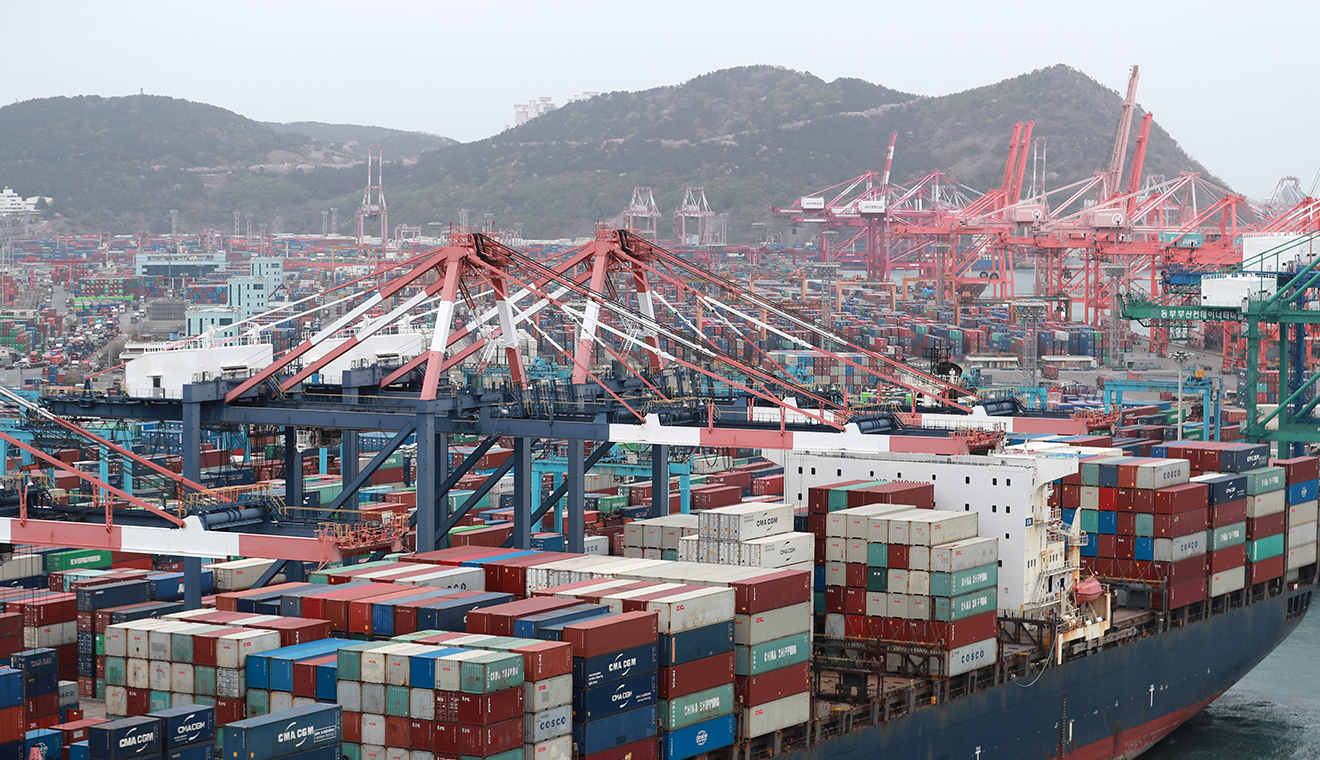June 2021

June 2021
Korea sees growing momentum for economic recovery from the post-pandemic slump. There are positive signs that the country is now on its track to a complete exit from the COVID-19-induced global recession, on the back of robust exports and record-high stimulus to boost the economy.
![]()
Written by
Sohn Ji-ae
Photo courtesy of
Yonhap News
 Economic indicators point to Korea’s solid resilience from the global recession.
Economic indicators point to Korea’s solid resilience from the global recession.
Pictured is Anseong Farmland’s flower field on April 18 with the phrase “Goodbye COVID-19.”
Last year, returning to pre-COVID-19 normalcy seemed almost impossible as the fight against the pandemic dragged on with no end in sight. This year, the world saw a silver lining to the COVID-19 crisis when vaccines were invented and started being administered to the broader public.
Yet, dark clouds are still hanging over the world as many countries, like India, are seeing new surges of infections, killing many.
Korea is no exception. The seemingly endless virus spread remains a threat to people’s lives every day. The slower-than-expected COVID-19 vaccine rollout, as well as a possible new wave of infections remain a concern for the public.
However, Koreans who endured the brutal 2020 pandemic and resulting economic slowdown, are now seeing an economic recovery over the horizon. In more precise terms, overseas exports have picked up significantly and growth prospects for the Korean economy seem brighter than before.
The government asserts that the Korean economy is now on a recovery track. The confidence is backed up by the latest government reports on exports — accounting for nearly half of the Korean economy — which rose for six consecutive months from November 2020 to April 2021 and posted record highs during January-April (a little over 1Q) of 2021.
Citing a bold response on the scale of KRW 310 trillion to tackle the pandemic’s spread and the resulting global recession, as well as investment in innovative infrastructure, as another factor that bode well for the broader economy, the government on May 1 said, “Among major advanced economies, Korea was the first to recover to its pre-crisis level.”
President Moon Jae-in was also confident for an economic rebound when he said in a special address on May 10 to mark his fourth year in office, “Our economy has already recovered to the pre-COVID-19 level during the first quarter of this year, faster than that of any other OECD (Organisation for Economic Cooperation and Development) member.”
The faster expansion led to a flurry of 2021 growth outlook upgrades by both local and foreign economic institutions, and even President Moon.
The chief of staff promised that his administration would go all out to prompt the Korean economy to grow “at least 4%” this year, which is far higher than the OECD’s 3.3% forecast and even the 3.6% projection of the International Monetary Fund.
If the country hits the 4% growth rate this year, it would mark the fastest growth since 2010 when the economy expanded 6.8%. President Moon’s upgraded growth outlook reflects his strong confidence in maintaining economic recovery momentum.
Reaching the 4% mark may not be a long shot. Some foreign investment banks also revised up their 2021 growth outlook for the Korean economy to near or above 4%. JP Morgan raised its growth forecast for Korea to 4.6%, while Goldman Sachs projected the economy to grow 4.4%.
 Korea’s exports in April hit the highest growth in 10 years. Pictured are container ships docked at the Port of Busan.
Korea’s exports in April hit the highest growth in 10 years. Pictured are container ships docked at the Port of Busan.
Other economic indicators point to the nation’s strong economic resilience from the economic downturn. According to Refinitiv, a leading global financial market data and infrastructure provider, Korea’s sovereign credit risk has been on the decline since April, reflecting how foreign investors see the Korean economy. The nation’s sovereign credit-default swaps (CDS) or the cost of ensuring the nation’s bonds against non-payment has dropped to 19 basis points, the lowest since the 2008 financial crisis. The drop in CDS premium is meaningful as many other economies saw theirs rising since April.
The nation’s job growth hit a record high in nearly seven years, too. Statistics Korea on May 12 said that the number was 27.214 million in April, up 652,000 from the same month last year. It is the biggest increase since 2014.
All the optimistic growth reports add to evidence that the economic recovery is gathering pace. Local think tanks and experts project that despite uncertainties over the vaccine rollout and recurring COVID-19 surges, the solid recovery trend will continue this year.
The government hopes that the momentum will carry over into the remaining quarters of the year. The Moon administration vowed that over the remainder of its term, it would do everything possible to achieve full economic recovery. “All government capabilities will be mobilized, and private-sector vitality will be enhanced so that our economy will grow at more than 4%,” President Moon said.